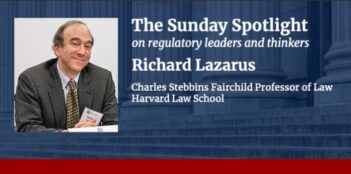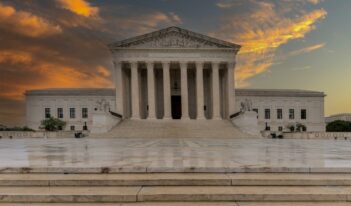
Considering the costs and benefits of regulation should include indirect effects in the calculation.
A coalition of coal companies, coal-fired power plants, and coal-friendly states recently argued before the U.S. Supreme Court that the system of evaluating regulations that the U.S. Environmental Protection Agency (EPA) has used under presidents of both parties, across four decades, should be altered. The case, Michigan v. EPA, challenges the EPA’s rule finalizing the mercury and air toxics standards (MATS), which regulate toxic emissions from power plants.
The EPA estimates that the MATS rule will generate substantial benefits by reducing emissions of mercury, arsenic, and other pollutants from power plants. Among these benefits, the EPA anticipates anywhere from $37 to $90 billion in public health and welfare benefits, compared to roughly $9 billion in estimated compliance costs.
Instead of looking at all of the costs and benefits of the rule, the coal coalition claims that the EPA should ignore many of the potential benefits—like the prevention of approximately 11,000 deaths each year from pollution-induced asthma and heart attacks—on the grounds that they are indirect effects of the rule. Industry groups insist that the EPA should only be allowed to count benefits traceable directly to mercury’s effects during prenatal development, which amount to only $4-6 million. That small sliver of benefits completely disregards the rest of the potential $90 billion in health and welfare gains the EPA estimates will result from reducing other pollutants, like particulate matter, that coal power plants emit alongside mercury when they burn coal for energy.
Taking into account the indirect benefits from reducing other pollutants is neither new nor partisan. For decades, federal agencies have been required to account for indirect effects of regulations when weighing costs and benefits. Presidents of both parties have issued executive orders telling agencies to judge costs and benefits of regulations based on the “actual results of regulatory requirements,” and instructing agencies to look at both direct and indirect costs and benefits. Indirect effects also factor into the review of regulations.
Under President George W. Bush, the Office of Management and Budget (OMB) updated guidance for the EPA and other federal agencies to “standardiz[e] the way benefits and costs of Federal regulatory actions are measured,” and directed agencies to use the “same standards” for assessing indirect and direct benefits. Likewise, the EPA’s own peer-reviewed guidelines for writing regulations direct the agency to look at “all identifiable costs and benefits,” including both direct effects “as well as ancillary [indirect] benefits and costs.”
Legal precedent not only supports, but also requires the EPA to take indirect effects of its regulations into account. The courts, in both American Trucking Associations v. EPA and Corrosion Proof Fittings v. EPA, have specifically required the EPA to consider indirect effects when evaluating a rule under the Clean Air Act. Other agencies, such as the National Highway Transportation Safety Administration and the Occupational Safety and Health Administration face similar requirements.
The industry petitioners in Michigan v. EPA are not just bucking precedent, guidance, and executive orders with their arguments; they are also arguing against themselves. At the same time they argue that the EPA should ignore indirect benefits, the petitioners claim that the agency must include any potential cost of the rule—however indirect—such as less reliable electricity. Not only do the industry petitioners fail to recognize that the EPA already accounted for these indirect costs, they also fail to realize how their zealous attention to indirect costs undercuts their plea to ignore indirect benefits.
In fact, industry petitioners have even appealed to indirect benefits when it suits them, claiming the MATS rule is unnecessary because indirect benefits of other power plant emissions regulations under the Clean Air Act include reductions in mercury and other hazardous pollutants. Nevertheless, the petitioners now seek to disregard indirect benefits that would help justify regulations they oppose. Cost-benefit analysis, however, must be more consistent.
Although the Supreme Court declined formally to entertain an appeal on the question of whether agencies should take indirect benefits into account when evaluating rules, the issue still remains relevant to what is before the Court. The petitioners’ arguments rest on a biased characterization of the MATS rule as unjustifiably costly, which presents the Court with an opportunity at least to clarify that agencies, in order to meet their obligations to evaluate their regulations fairly and accurately, should take indirect benefits into account the same way they account for indirect costs.
This essay is part of a three-part series, High Court Hears Debate Over Costs and Benefits of Regulating Air Pollution.
Cerin Lindgrensavage is a law student at New York University School of Law. She contributed research for the Institute for Policy Integrity’s amicus brief in Michigan v. EPA.



